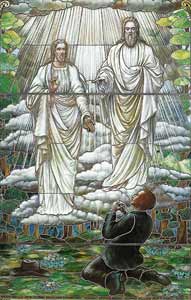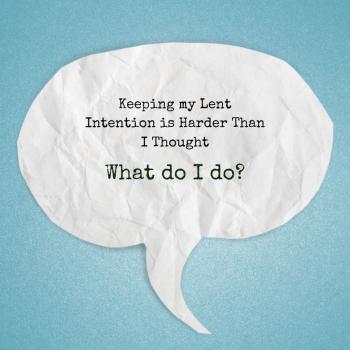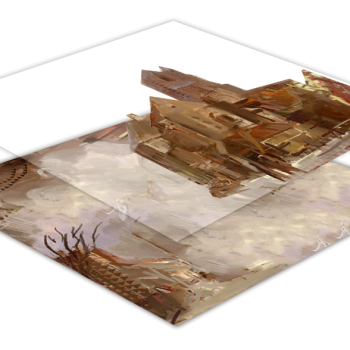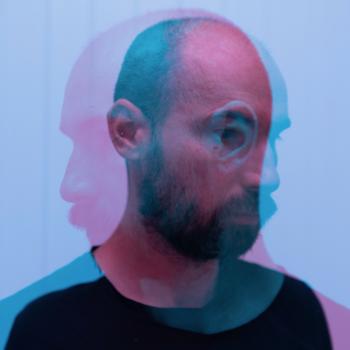Oh Lord God, deliver us in thy due time from the little narrow prison almost as it were total darkness of paper pen and ink and a crooked broken scattered and imperfect language. ~ Joseph Smith to William W. Phelps, Nov. 27, 1832
We have to cease to think if we refuse to do it in the prison-house of language; for we cannot reach further than the doubt which asks whether the limit we see is really a limit . . . ~ Nietzsche
 Like most religions, Mormonism as a religion has a formal hierarchy. It has official statements and declarations. It is, on the surface, decidedly not a post-modern religion, and most of its adherents are not postmodernists. Mormons like to see their faith as being grounded in absolutes. They like to say, "I know." Yet, once we move beyond the religion to its theology, we find something very different.
Like most religions, Mormonism as a religion has a formal hierarchy. It has official statements and declarations. It is, on the surface, decidedly not a post-modern religion, and most of its adherents are not postmodernists. Mormons like to see their faith as being grounded in absolutes. They like to say, "I know." Yet, once we move beyond the religion to its theology, we find something very different.
Postmodernism is a notoriously difficult term to define. So, I am not going to try. Instead, I want to explain three postmodern themes and describe how they relate to Mormon theology. These postmodern themes often reveal a hidden tension within the Mormon faith, caused by seemingly paradoxical claims and suggestions. These themes are continuing revelation, the theological hierarchy of the church, and its approach to pluralism.
The first of these postmodern themes of Mormon theology is the idea of continuing (if not continuous) revelation from God. This principle is valued within the faith at every level, from its leadership to its members in the pews. But with this idea of continuing revelation comes an often troublesome disclosure. Revelation can overturn that which we held sacred. It can reverse our views of past discourse from God. It can modify our interpretation of scripture. As Bruce R. McConkie once said: "Forget everything that I have said, or what President Brigham Young or President George Q. Cannon or whomsoever has said in days past that is contrary to the present revelation. We spoke with a limited understanding and without the light and knowledge that now has come into the world." (August 18, 1978)
With ongoing revelation, the only certainty is that change is inevitable, and that we never know quite as much as we think we do. And even as we receive more revelation we are reminded that our present understanding too is limited; we can assume with absolute certainty that we believe some things (perhaps many things) that are not absolute truth (and which may be entirely wrong), that are not understood, and about which we presume that we will receive additional insight and revelation. Our leaders and our prophets, our texts, even our scripture, are not viewed as inerrant, perfect, or necessarily self-revealing.
Joseph Natoli describes it: "In the life of a postmodernist, the problem is not that we might wander and that we therefore would be faced with contesting views none of which can validate itself as The Truth. The problem is that we might elevate some narrative to Truth status and stop wandering. We might invest some observation . . . with full determinate status." Just as personal revelation can alter our individual perceptions of our faith and the world around us, so too revelation alters the perception of the LDS Church as a whole. The risk isn't that the Church or its members continue searching and asking for more truth, it is that at some point the Church stops searching, believing that it has found all there is to find, and concludes that God has said all that He is going to say.
The second of these postmodern themes within LDS theology is the idea of authority. The LDS faith has what has been called a "rigid hierarchy"—a top-down authoritative structure, and yet, paradoxically, from a theological perspective, the authority lies with its members at the bottom instead of with the leaders at the top. In 1884, James Barclay (the British member of Parliament) wrote: "At the same time, every individual has full freedom of action. There is no compulsion on any Mormon beyond the public opinion of his fellows, and none is possible. All are equal. There is no special or privileged class or caste. The people in the fullest sense govern themselves."
There is an instructive narrative in the Book of Mormon. The prophet Lehi receives a vision of the Tree of Life. Afterward, his sons want to understand the vision, and the narrative contrasts two separate responses. The first response is that of his son Nephi. To understand the vision, Nephi asks God to receive it, and he does receive it. As he tell us, "I Nephi was desirous also, that I might see, and hear, and know of these things . . ." After he receives his vision, his brothers (Laman and Lemuel) come to him and ask him about its meaning. And he asks them: "Have ye inquired of the Lord?" They respond by suggesting that God does not speak to them.




